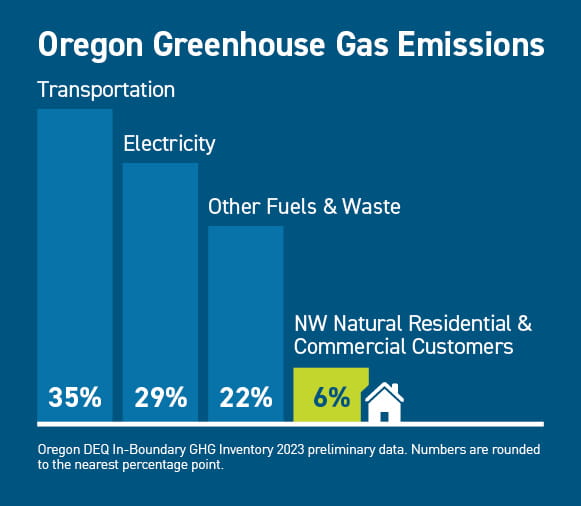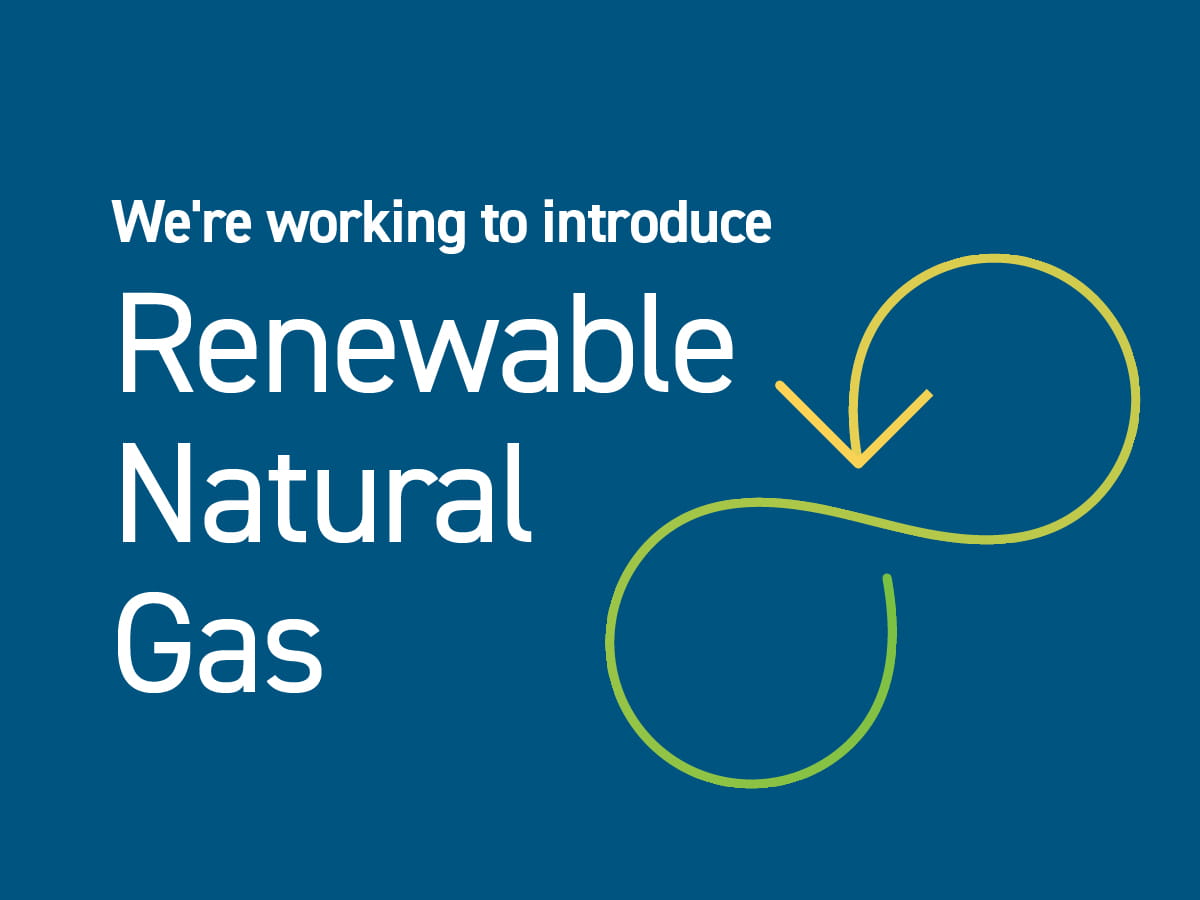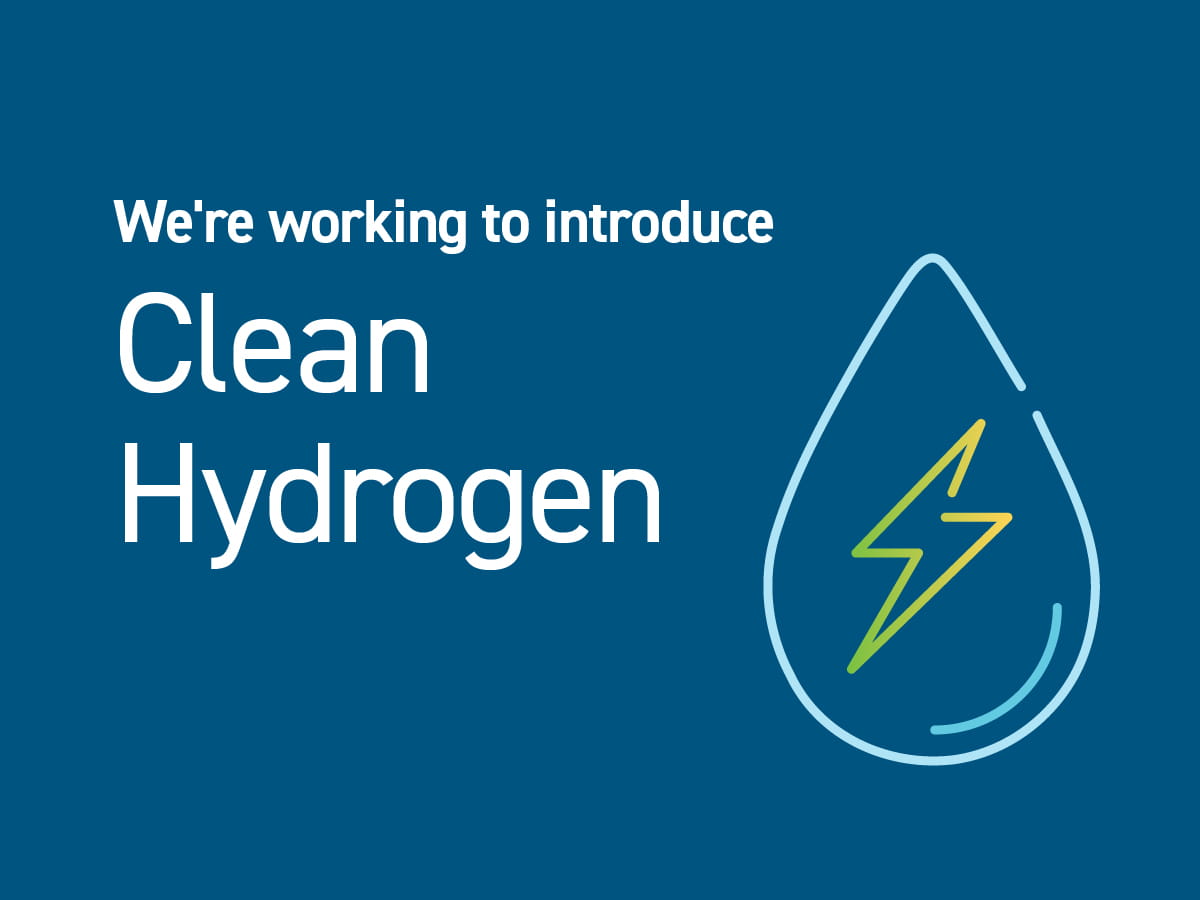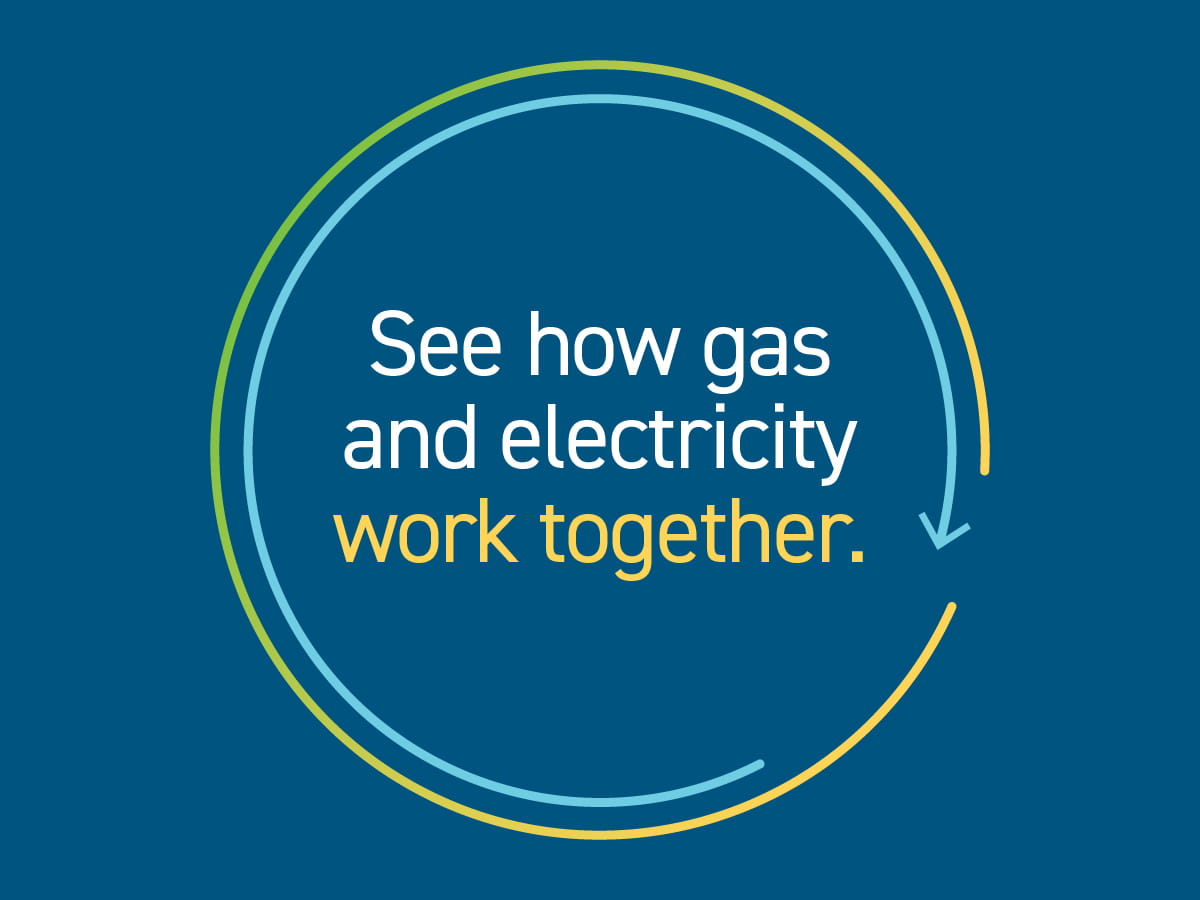These energy facts might surprise you.
Addressing climate change is among the most complex and challenging problems of our time. How we heat and power our homes and businesses; how we fuel our cars, planes, trains and ships: It’s all evolving. We believe in a future where innovation thrives. Where the gas and electric systems work in tandem to lower emissions through a portfolio of technologies.
The energy we provide to residential and commercial customers in Oregonaccounts for about 6% of the state’s overall GHG emissions, compared to electricity at 29% – and the transportation sector, which is still the largest emitting sector.[2]Oregon DEQ In-Boundary GHG Inventory 2023 preliminary data. Available at: https://www.oregon.gov/deq/ghgp/Pages/GHG-Inventory.aspx
We’re working to deliver lower carbon energy for the appliances you already have.
We believe innovative solutions that use a diversified energy system will get us to a carbon-neutral future faster and more affordably. We believe for reliability and energy security that our communities need two energy systems – one above ground and one below ground working together. NW Natural is a leader among utilities in pursuing renewable natural gas for our customers. We are also partnering with global energy companies to accelerate clean hydrogen and carbon capture technologies.
Renewable natural gas (RNG) is not a fossil fuel and does not add more carbon dioxide into the atmosphere. RNG is derived from biogas, which is produced from decomposing organic waste from landfills, agricultural waste and wastewater from treatment facilities, that has been captured and cleaned for the pipeline.[3]/*EPA, “An Overview of Renewable Natural Gas from Biogas,” 2021, available at: https://www.epa.gov/sites/default/files/2021-02/documents/lmop_rng_document.pdfLearn more.
Long-duration storage: The gas system advantage
On the coldest winter days, the natural gas system in Portland delivers about twice as much energy as the electric system for residential customers. [6]ICF Calculation using NREL End-Use Load Profiles for U.S. Building Stock, 2021, available at: https://dx.doi.org/10.25984/1876417 And yet, electric utilities are relying on about as much natural gas as we do to produce reliable power.[7]In 2022, Oregon’s natural gas deliveries for electric power was 132,356 mmcf. Natural gas deliveries for residential, commercial and industrial sectors were 139,068 mmcf. Source: EIA annual natural gas deliveries to consumers, Oregon 2022, available at https://www.eia.gov/dnav/ng/ng_sum_lsum_dcu_SOR_a.htm While using more natural gas has helped the power sector lower emissions, it also means electric equipment is not fossil fuel free. So, if policymakers restrict or ban gas use in homes and businesses for heating and cooking, electric utilities will just need to use more of it to produce power. That’s because wind, solar and batteries can’t meet all cold weather winter energy demands.
While the electric system cannot store energy seasonally at scale, the gas system does. For example, if you tried to replicate NW Natural’s existing energy storage capability, it would be equivalent to a $3 trillion lithium-ion battery.[8]National Renewable Energy Lab battery cost projections available at: https://www.nrel.gov/docs/fy23osti/85332.pdf Fortunately, our existing storage can be used to store natural gas or renewable energy – helping support the energy transition.



